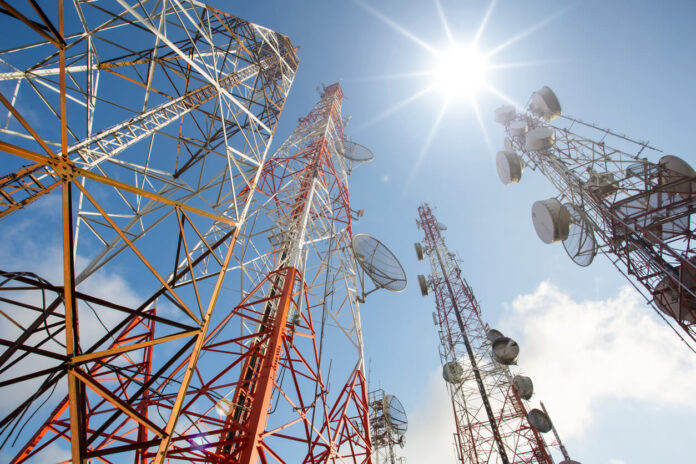Tower climbers have one of the most dangerous professions in the world, predominantly due to the risks associated with falling. However, those who work on structures that are situated near RF-emitting devices such as broadcast, and telecommunications antennas have the added risk of RF radiation overexposure. Although not considered medically significant at low levels, RF radiation can pose a health risk, particularly when multiple sources are present, and the cumulative levels exceed prescribed safety limits. Furthermore, the closer a worker gets to an antenna and the longer they remain in the RF radiation field, the greater the impact on their body. There are, however, steps that tower climbers can take to maintain safety at all times:
1. Completing the relevant training
2. There’s no “I” in team
3. Being equipped with the right PPE
Let’s first consider what RF (Radio Frequency) radiation is. RF radiation is the propagation of energy in the form of radio waves, which are a subset of the electromagnetic spectrum. It travels at the speed of light and is extensively used in broadcast radio, television and telecommunications systems. The known negative side-effects of RF overexposure are whole body and localized heating, and because of this it is important that workers are not exposed to levels exceeding the guidelines set down by the authorities.
Tower climbers should be trained in the use of calibrated personal RF monitoring devices such as one from the FieldSENSE range of Personal RF Monitors and then wear it when working around or on a tower with active transmitters. Over and above this there are a number of steps that can be taken to limit the risk of RF overexposure listed below.
1. Completing the relevant training
Armed with the insight into the risks associated, a trained professional should perform a risk assessment and prepare a plan prior to the work commencing. This will include:
- Establishing if work permits are required,
- notifying carriers who use the tower’s antennas of the work to be performed,
- where necessary, arranging to reduce RF emissions during the work,
- identifying the climbing equipment that will be needed,
- assessing the soundness and validity of the structure and all anchor points,
- how to execute any and all lockout/tagout procedures specific to the site, and on the day weather and other conditions that may affect workers as weather on the ground may be vastly different to up a tower.
2. There’s no “I” in team
Building, climbing, and repairing cell towers is more than a one-person job. Teams working together need to adhere to the climb plan and conduct their work in compliance with the pre-approved plan. Staying in close contact with each other – through the use of 2-way radios for instance – helps to ensure everybody on the team is fully aware of the situation each member is facing, and should an unexpected event arise, immediate corrective action can be taken if required.
Knowing the RF environment that work is to take place in is integral to safe working, and more so when working at heights as RF overexposure can lead to dehydration, heat stress or in extreme conditions heat stroke. It is the responsibility of the team leader and each team member to know the overall plan and procedures, as they may be incapacitated and rely on everyone knowing this for a rescue at height.
3. Being equipped with the right PPE
Work in environments where RF exposure levels are expected to exceed the safe working limits mandate the use of appropriate PPE (Personal Protective Equipment). Personal RF Monitors like those in the FieldSENSE range are especially designed to protect workers from RF overexposure by giving a timely warning of the presence of RF in their vicinity. These devices are specifically designed to not be a hindrance while performing the work at hand.
The human body can work like an antenna in certain conditions. Personal RF Monitors are attached to the climber’s harness and continuously measure the amount of RF in the surrounding atmosphere. As RF is not visible to the naked eye a suitable monitor becomes the eyes of the worker, helping to keep them safe.
TestEquity are an approved UK partner for FieldSENSE
Content Source: Three RF Safety Measures For Tower Climbers – fieldSENSE



